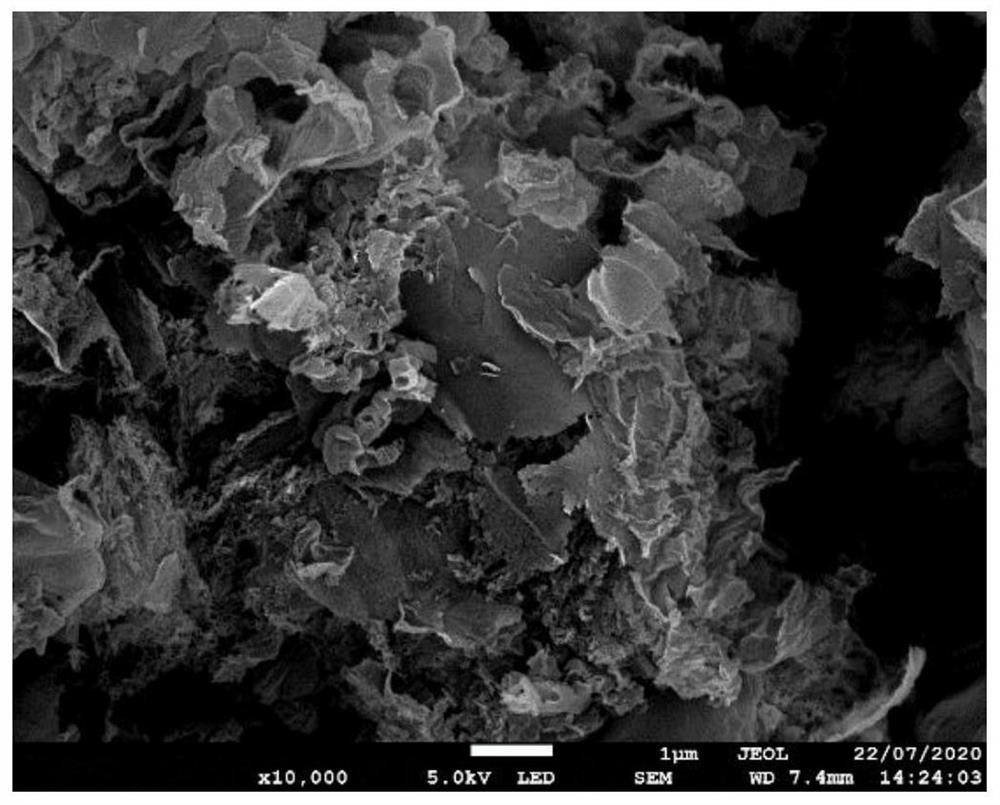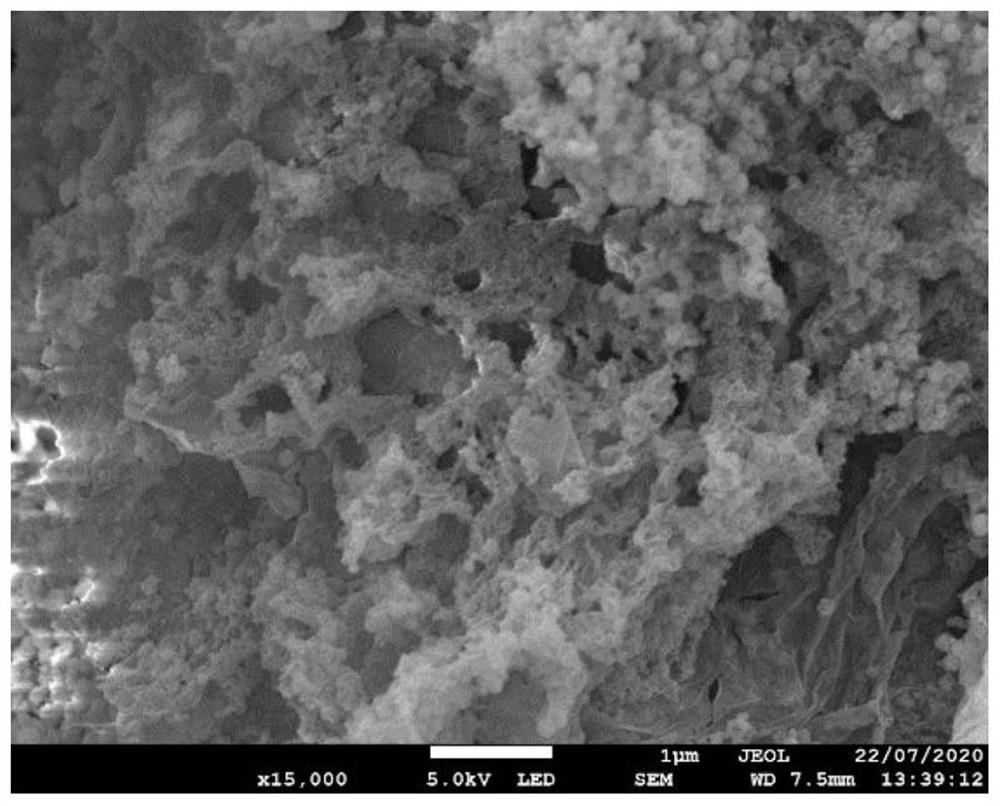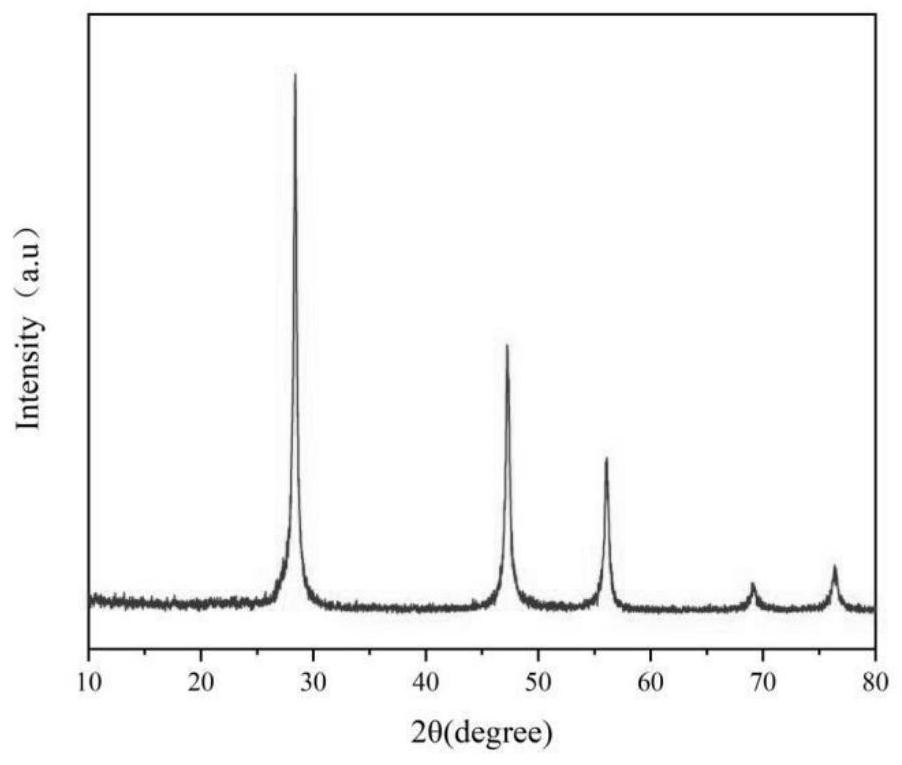Silicon-carbon composite negative electrode material and preparation method and application thereof
A composite material and in-situ composite technology, applied in the direction of nanotechnology, silicon compounds, chemical instruments and methods for materials and surface science, to achieve high thermal and chemical stability, improve binding force, and solve the effect of agglomeration
- Summary
- Abstract
- Description
- Claims
- Application Information
AI Technical Summary
Problems solved by technology
Method used
Image
Examples
Embodiment 1
[0077] Using melamine as the precursor, it was placed in a muffle furnace, and in an air atmosphere, the temperature was raised to 500 °C at a rate of 2 °C, and the temperature was maintained for 2 hours. After cooling, a pale yellow bulk material after primary sintering was obtained; Continue to raise the temperature to 550°C at a rate of 2°C under the air atmosphere in the muffle furnace, keep the temperature for 4 hours, and obtain a white thin-layered material after secondary sintering after cooling; The amount of 100mL is uniformly dispersed in the reaction solution composed of ammonia water, deionized water, organic dispersion liquid (ethanol) and CTAB (wherein, the volume ratio of ammonia water, deionized water, and ethanol is 1:50:15, and the amount of CTAB added is 0.2g. / 100mL), and then slowly add ethyl orthosilicate in an amount of 5v.t.% (based on the reaction liquid system, the following cases, unless otherwise stated, the addition amount of silicate is based on t...
Embodiment 2
[0081] Using melamine as the precursor, it was placed in a muffle furnace, and in an air atmosphere, the temperature was raised to 450°C at a rate of 1°C, and the temperature was maintained for 3 hours. After cooling, a pale yellow bulk material was obtained after primary sintering; materials, continue to heat up to 500 ℃ at a rate of 1 ℃ under the air atmosphere in the muffle furnace, keep for 6 hours, and obtain white thin-layered materials after secondary sintering after cooling; The amount of 100mL is uniformly dispersed in the reaction solution composed of ammonia water, deionized water, organic dispersion liquid (ethanol) and CTAB, wherein the volume ratio of ammonia water, deionized water and ethanol is 1:70:10, and the amount of CTAB added is 0.3 g / 100mL, then slowly add ethyl orthosilicate in an amount of 5 v.t.%. After reacting at 50 °C for 24 hours, the product was repeatedly washed with ethanol and deionized water, and dried at 80 °C to obtain a silicon-carbon compo...
Embodiment 3
[0084] Using melamine as the precursor, it was placed in a muffle furnace, and in an air atmosphere, the temperature was raised to 550°C at a rate of 10°C, and kept for 1 hour. After cooling, a pale yellow bulk material after primary sintering was obtained; materials, continue to heat up to 600 ℃ at a rate of 10 ℃ under the air atmosphere in the muffle furnace, keep for 2 hours, and obtain a white thin-layered material after secondary sintering after cooling; The amount of 100mL is evenly dispersed in the reaction solution composed of ammonia water, deionized water, organic dispersion liquid (ethanol) and AOT, wherein the volume ratio of ammonia water, deionized water and ethanol is 1:40:40, and the amount of AOT added is 0.1g / 100mL, then slowly add ethyl orthosilicate, the addition amount is 5v.t.%, after 24 hours of reaction at 50 °C, the product is repeatedly washed with ethanol and deionized water, and dried at 80 °C to obtain a silicon-carbon composite precursor. The sil...
PUM
 Login to View More
Login to View More Abstract
Description
Claims
Application Information
 Login to View More
Login to View More - R&D
- Intellectual Property
- Life Sciences
- Materials
- Tech Scout
- Unparalleled Data Quality
- Higher Quality Content
- 60% Fewer Hallucinations
Browse by: Latest US Patents, China's latest patents, Technical Efficacy Thesaurus, Application Domain, Technology Topic, Popular Technical Reports.
© 2025 PatSnap. All rights reserved.Legal|Privacy policy|Modern Slavery Act Transparency Statement|Sitemap|About US| Contact US: help@patsnap.com



